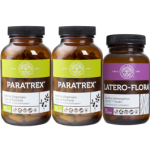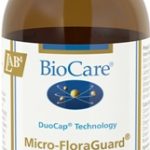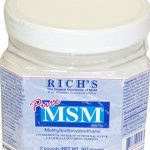Bacteria, candida, fungi and viruses – you’ve heard of all them, no doubt. And you’ll likely have some idea of what they are. And the fact that they’re bad for you and can make you ill. But do you know why? And how? And where in the body they can be found?
Collectively, they tend to be referred to as ‘parasites’ and ‘harmful organisms’, which fairly adequately describe what they are and what they do; as they take roost in certain parts of the body, make themselves at home and cause trouble, threatening the body’s effective running and harming your health.
More specifically, such microscopic organisms tend to settle themselves on and live off other organisms (hence their parasitic description), stealing the body’s much needed nutrients, producing their own harmful waste and causing – to a greater or lesser extent – harm to your health. Indeed, these parasitic organisms have always been problematic for us; whether we live in the first-world West or a developing nation1 – they’re simply everywhere and very difficult to avoid and escape.
Harmful organisms and the gut
And yet, different harmful organisms can have different harmful effects on different parts of the body. That said; specifically here, we’re going to look at those that tend to settle in the gut and disrupt its normal operation and overall efficacy.
The gut – or the gastrointestinal tract – is a complex part of the body comprising the organs of the digestive system (all the way from the stomach through to the anus); thus, it’s effectively the journey that the food we consume and the waste thereof travels in the body. To wit, it contains far more than just the organs, for within these organs are found millions of enzymes and bacteria – the ‘good’ probiotic sort of bacteria – that are created and work hard to process and break down food and extract and excrete unnecessary waste. All told then, the gut is as much an ecosystem as it is a network of bodily bits and pieces. And, unfortunately, that ecosystem also tends to feature – and be disrupted by – harmful organisms.
In fact, it’s not just gut health that these microscopic, parasitic entities upset; it’s the body’s overall health. That’s because gut health, so it’s being increasingly discovered, is symbiotically connected to the health of much of the rest of the body. When all’s not well in your digestive system, you’re also bound to be feeling off somewhere else. Which makes targeting and combating these bad gut-residing organisms all the more important for your overall wellbeing2.
Which harmful organisms plague the gut?
Home to a great number of individual species of parasite then, the gut is preyed on by some truly nasty little things, including the very unappetising helminth worms, but especially the following:
- Protozoa – as many as 70 different species of this microscopic, single-celled type of organism can infect us and prove harmful3; diseases such as malaria and African sleeping sickness are caused by protozoa (at worst potentially causing fatalities4 ). Yet, usually to a less hazardous extent, they can infect almost anyone’s gut and bring on issues like intestinal pain and diarrhoea. All told, protozoa are fast-acting and aggressive, which isn’t surprising given how ‘effective’ they tend to be; they multiply very swiftly, indeed5, 6.
- Candida – another single-celled organism, the yeast-like Candida albicans thrives in the gut and especially the intestines; if it’s allowed to thrive (due to a suppressed immune system7) then the result will inevitably be candida overgrowth and the production of at least 100 different toxins. This can cause widespread harm because the toxins tend to be absorbed through the intestinal wall, enabling them entry into the bloodstream and the opportunity to travel wherever they like in the body. No surprise then that candida-related infections seem to be every rising – and, worryingly, because these infections are becoming increasingly drug-resistant they’re also becoming tougher to treat8.
How can you avoid these organisms?
As noted, it’s not easy – frankly, practically impossible – never to have a parasitic organism get inside your body and disrupt things. However, those that like to make for and end up in the gut, especially, tend to find their way into the human body via faecal contamination of food or water or by contact between people5, 9. Usually, you’ll start to feel there’s something wrong pretty immediately protozoa get a damaging grip on your gut; while, in contrast, the likes of helminth worms can live and grow inside the gut for years without offering so much of a hint of detection. Far from a pleasant thought!
So, to avoid these parasites getting into the gut in the first place, what can you do? Well, as you may have guessed, common-sense action is the way forward. Preventative measures include:
- Remember to wash your hands regularly and especially before handling and eating food – and thoroughly washing fruits and vegetables while preparing them
- Be vigilant when it comes to ascertaining where the food you buy may have originated; can you really trust the source?
- Groom your pets regularly – especially if they tend to spend a good deal of time out of doors
- Adopt a balanced diet (with lots of high-quality, organic fruit and veg) and exercise regularly to help maintain your immunity levels and ‘good bacteria’ gut levels, which will aid in your body automatically combating the spread of harmful organisms, especially candida
- Don’t overuse antibiotics as, otherwise, you could suffer from candida overgrowth10.
Parasite supplements
In addition to the above tips, you may be tempted to try natural supplementation – especially if, despite your best efforts, you find your gut is still regularly plagued by parasitic, harmful organisms. Along with all the others listed in our ‘Parasite Management’ section, the following parasiteand candida supplements are each available via The Finchley Clinic:
Harmful Organism Cleanse Kit – designed to flush and cleanse the body (not least the gut) of harmful organisms; includes two bottles of Paratrex (to help create an inhospitable environment for unwanted organisms) and one bottle of Latero-Flora (to help populate the intestines with beneficial flora to support normal digestion).
MicroFloraGuard – smartly designed to provide probiotics (friendly ‘good’ bacteria) and food grade oils with the aim of combating candida at different times (so they don’t cancel out the effect of each other) but in a single daily supplement.
MSM Powder – may help manage candida yeast infections, as well as a whole host of other complaints: arthritis, asthma and other respiratory problems, constipation, eczema and other skin problems, inflammatory problems, joint pain and leaky gut.
References:
1. Zaccone P. et al. ‘Parasitic Worms and Inflammatory Diseases’. Parasite Immunology 28.10 (2006): 515–523.
2. ‘Intestinal Parasites’. University of Maryland Medical Center. University of Maryland, Apr 2014.
3. Cox F. E. G. ‘History of Human Parasitology’. Clinical Microbiology Reviews 15.4 (2002): 595–612.
4. ‘Helminth Parasites’. PARA-SITE. The Australian Society for Parasitology, n.d.
5. ‘About Parasites’. Centers for Disease Control and Prevention. Centers for Disease Control and Prevention, Mar 2014.
6. ‘Protozoan Parasites’. PARA-SITE. The Australian Society for Parasitology, n.d.
7. O’Meara T. R. et al. ‘Global analysis of fungal morphology exposes mechanisms of host cell escape’. Nat Commun. Mar 2015; 6: 6741.
8. Hickman M. A. et al. ‘The ‘obligate diploid’ Candida albicans forms mating-competent haploids’. Nature. Feb 2013; 494 (7435): 55-9.
9. Lee, M. B. ‘Everyday and exotic foodborne parasites’. The Canadian Journal of Infectious Diseases 11.3 (2000): 155–158.
10. http://www.ecandida.com/candida-albicans. Ecandida.com. 2016.



